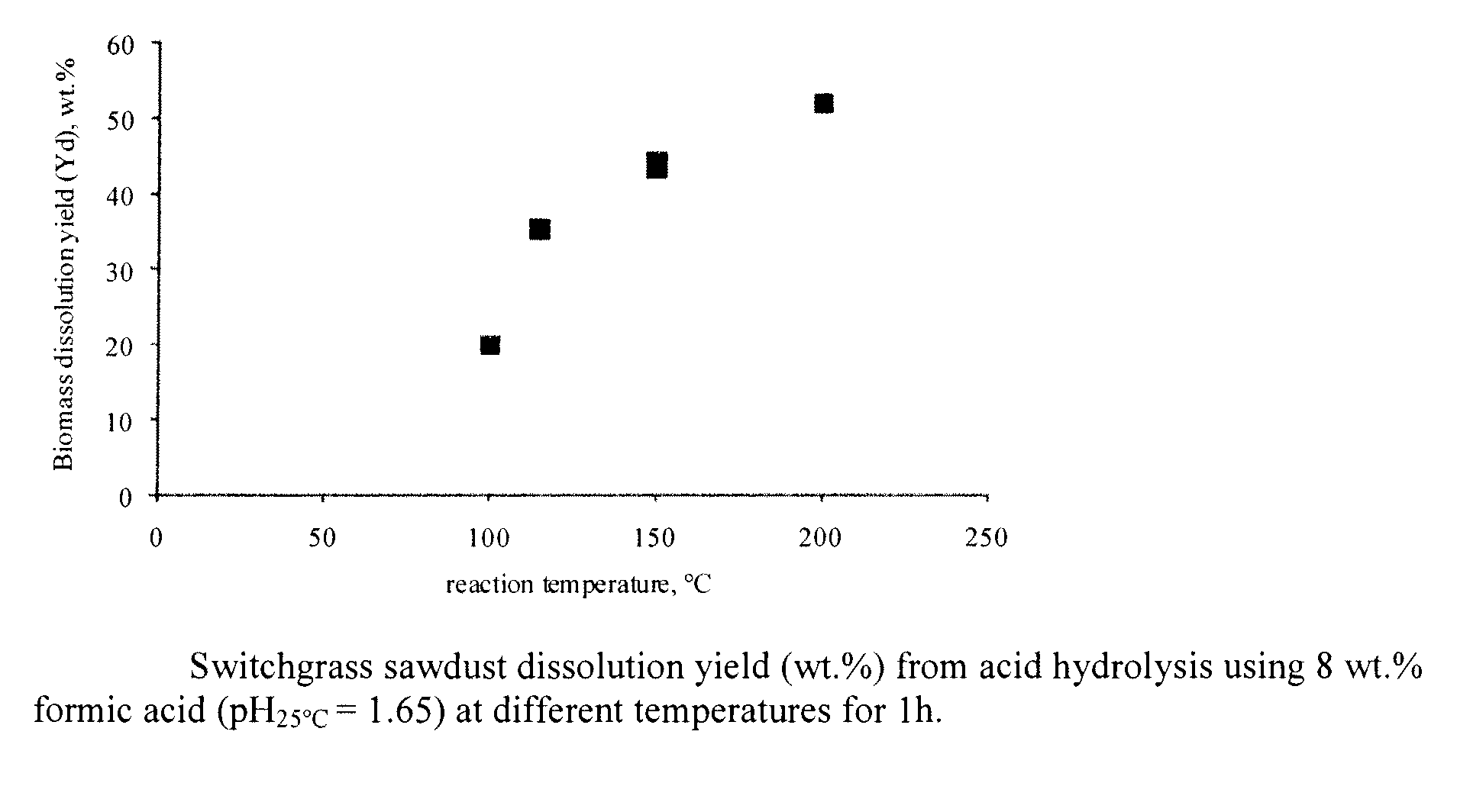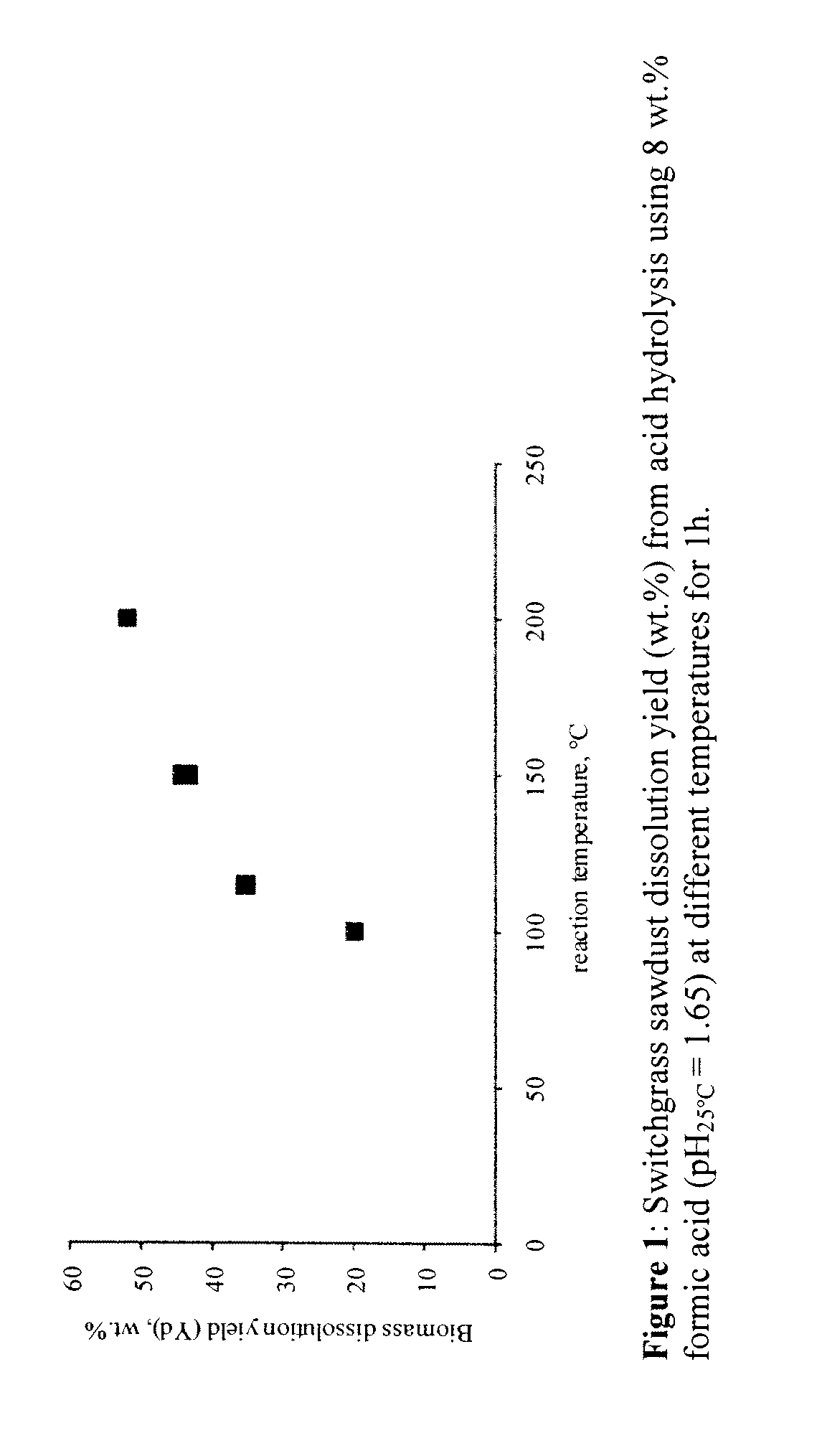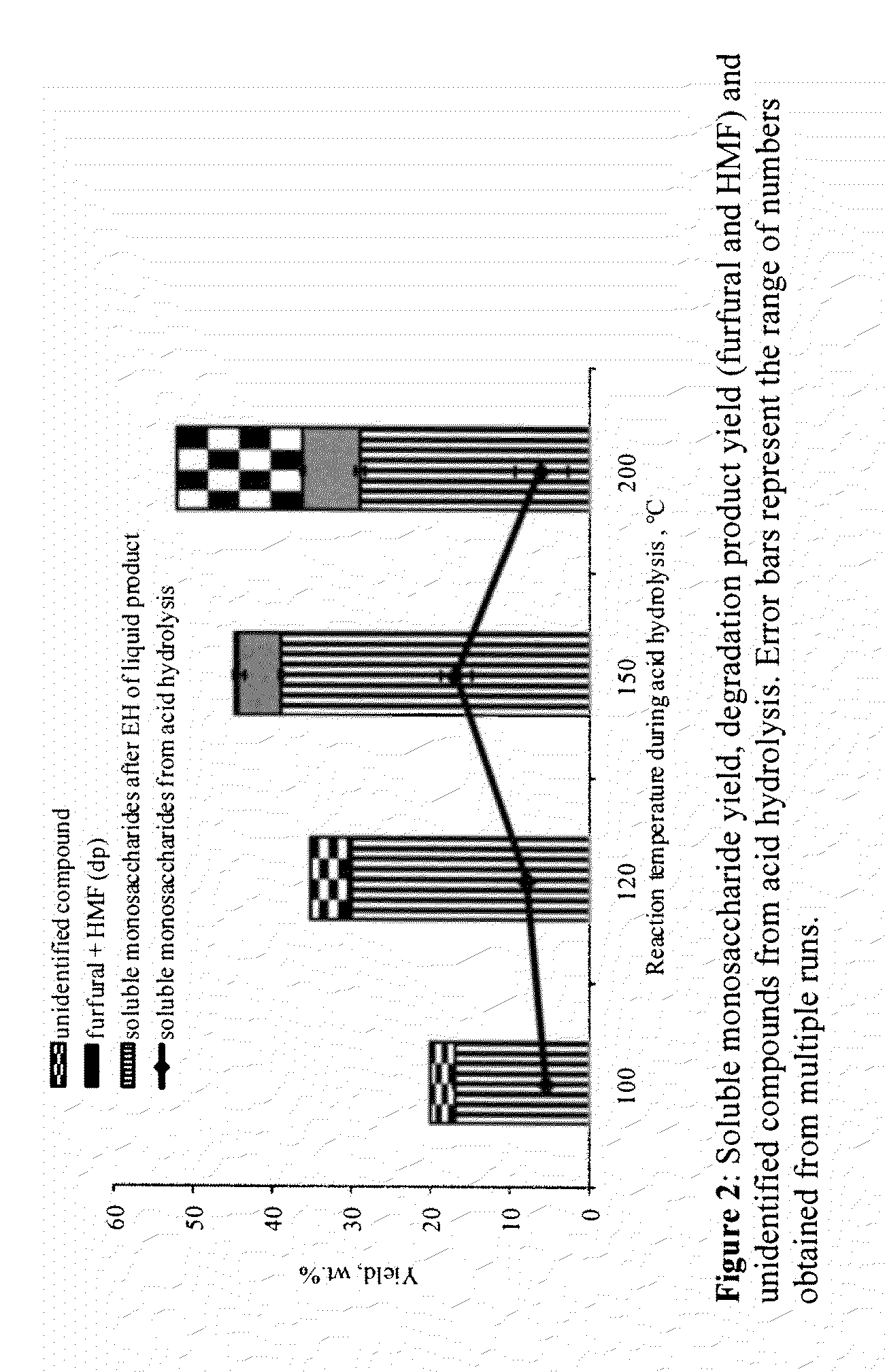Formic acid treatments of biomass feedstock
a technology of biomass feedstock and formic acid, which is applied in the direction of biofuels, fuels, glucose production, etc., can solve the problems of requiring the use of expensive alloys, mineral acids may also be corroding to conventional process equipment, and affect the performance of downstream heterogeneous or enzyme catalysts, etc., and achieve high yields.
- Summary
- Abstract
- Description
- Claims
- Application Information
AI Technical Summary
Benefits of technology
Problems solved by technology
Method used
Image
Examples
example 1
Switchgrass Feedstock Acid Dissolution
[0034]The below example employs switchgrass feedstock dissolution using aqueous acid solutions of various types and concentrations. The aqueous acid solutions comprising formic acid of the present inventions were found to exhibit surprising and unexpected dissolution efficiency, monosaccharide yield, and 2-furaldehyde / 5-hydroxymethyl-2-furaldehyde yields.
Materials and Methods
[0035]Six monosaccharides were used as standards for carbohydrate analysis: glucose, arabinose, galactose, xylose, mannose and fructose. All were purchased from Aldrich. Further dehydration of monosaccharides was quantified by identifying and analyzing two degradation products: 2-furaldehyde (furfural) and 5-hydroxymethyl-2-furaldehyde (HMF), both compounds purchased from Aldrich. Various acid-hydrolysis solutions were prepared using sulfuric acid (Fisher Scientific), trifluoroacetic acid (EMD Chemicals), acetic acid (EMD Chemicals) and formic acid (EMD Chemicals). The wate...
example 2
Material Balance for Two Examples of the Process
[0059]Dry switchgrass with a weight of 16.617 gm was employed as a feedstock. The theoretical yield is approximately 10 gm of sugars (˜60% of dry biomass). Acid hydrolysis with an aqueous solution of 41 weight percent formic acid at 150° C. for 1 hour at a pH of 1.65 yielded 4.78 gm of monosaccharides. Enzymatic hydrolysis yielded a total of 6.98 gm monosaccharides which represents about 70% of the total sugars present in the biomass. The amount of ethanol produced was 0.09 gm per gm of dry biomass.
[0060]The example was repeated again using dry switchgrass with a weight of 16.617 gm as a feedstock which as described above should yield approximately 10 gm of sugars (˜60% of dry biomass). This time acid hydrolysis with an aqueous solution of 41 weight percent formic acid at 150° C. for 1 hour at a pH of 1.65 also yielded 4.78 gm of monosaccharides. Enzymatic hydrolysis yielded a total of 8.17 gm monosaccharides which represents about 81%...
PUM
| Property | Measurement | Unit |
|---|---|---|
| temperature | aaaaa | aaaaa |
| temperature | aaaaa | aaaaa |
| volume/weight ratio | aaaaa | aaaaa |
Abstract
Description
Claims
Application Information
 Login to View More
Login to View More - R&D
- Intellectual Property
- Life Sciences
- Materials
- Tech Scout
- Unparalleled Data Quality
- Higher Quality Content
- 60% Fewer Hallucinations
Browse by: Latest US Patents, China's latest patents, Technical Efficacy Thesaurus, Application Domain, Technology Topic, Popular Technical Reports.
© 2025 PatSnap. All rights reserved.Legal|Privacy policy|Modern Slavery Act Transparency Statement|Sitemap|About US| Contact US: help@patsnap.com



